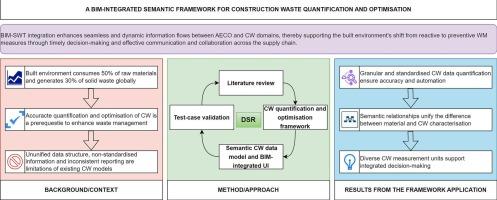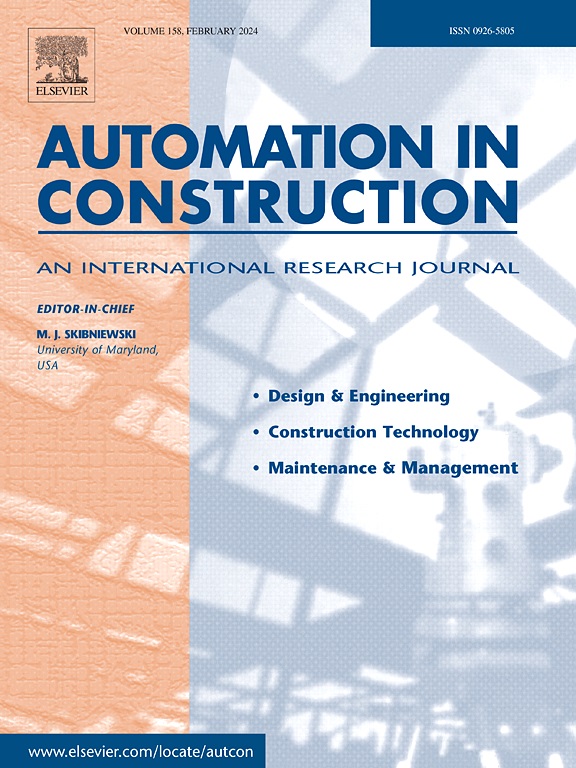用于建筑垃圾量化和优化的 BIM 集成语义框架
IF 9.6
1区 工程技术
Q1 CONSTRUCTION & BUILDING TECHNOLOGY
引用次数: 0
摘要
在设计阶段对建筑垃圾(CW)进行量化和优化,对于实施预防性 CW 管理措施至关重要。以往的信息和通信技术集成建筑垃圾模型无法有效地升级以实现可互操作和自动化的工作流程。因此,本文提出了一个集成 BIM 的语义框架,用于在早期设计阶段就对建筑垃圾进行量化和优化。使用语义网络技术(SWT)开发了一个化武数据模型,并将其与 BIM 集成。研究结果表明,统一的数据结构、标准化和细粒度的信息、建筑材料和化学工程数据之间建立的语义关系,以及框架中提出的多样化测量单位,促进了 BIM 和化学工程平台之间无缝和动态的信息流。这些研究成果对于提高整个建筑工程评估流程的互操作性和自动化程度、提高结果的准确性和可靠性、支持及时的综合决策以及简化供应链成员之间的沟通与协作至关重要。测试案例构建展示了该框架的应用。本文章由计算机程序翻译,如有差异,请以英文原文为准。

BIM-integrated semantic framework for construction waste quantification and optimisation
Quantification and optimisation of Construction Waste (CW) in the design stages are vital to implementing preventive CW management measures. Previous ICT-integrated CW models are not efficiently upscaled to achieve an interoperable and automated workflow. Therefore, this paper presents a BIM-integrated semantic framework for CW quantification and optimisation from the early design stages. A CW data model using Semantic-Web-Technologies (SWT) was developed and integrated with BIM. The results proved that unified data structure, standardised and granular information, established semantic relationships between building material and CW data, and diverse measurement units proposed in the framework facilitate seamless and dynamic information flows between BIM and CW platforms. The research outcomes are critical to improving interoperability and automation across the CW assessment process, enhancing the accuracy and reliability of results, supporting timely and integrated decision-making, and easing communication and collaboration among the supply-chain members. A test-case building demonstrates the application of the framework.
求助全文
通过发布文献求助,成功后即可免费获取论文全文。
去求助
来源期刊

Automation in Construction
工程技术-工程:土木
CiteScore
19.20
自引率
16.50%
发文量
563
审稿时长
8.5 months
期刊介绍:
Automation in Construction is an international journal that focuses on publishing original research papers related to the use of Information Technologies in various aspects of the construction industry. The journal covers topics such as design, engineering, construction technologies, and the maintenance and management of constructed facilities.
The scope of Automation in Construction is extensive and covers all stages of the construction life cycle. This includes initial planning and design, construction of the facility, operation and maintenance, as well as the eventual dismantling and recycling of buildings and engineering structures.
 求助内容:
求助内容: 应助结果提醒方式:
应助结果提醒方式:


